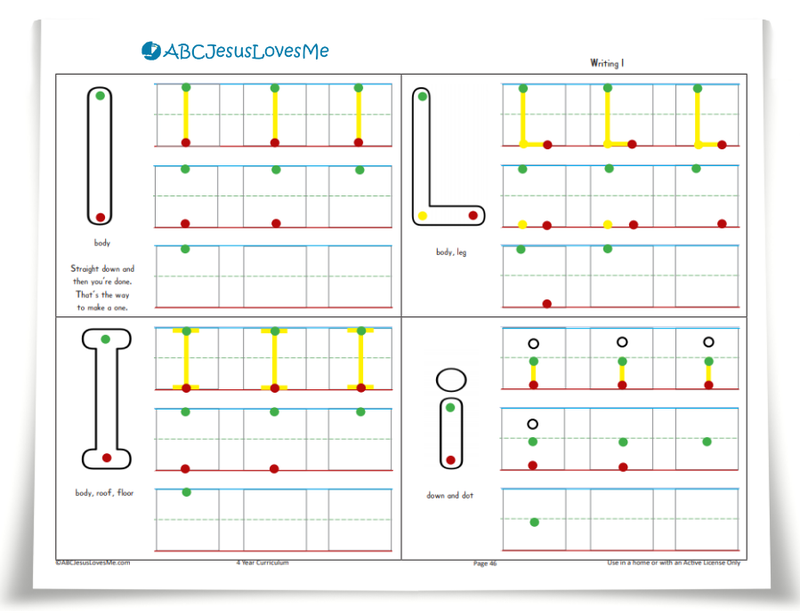
Age: 4-5 Years
Once the child is able to correctly trace letters and numbers, it is time to place the characters on the classic tracing lines so she can practice keeping the letters and numbers uniform while using a short pencil.
Almost every number and letter in the alphabet is similar to another letter or number. The Letter and Number Progression worksheets combine these similarities to make handwriting easier. Beginning with the simple line and progressing to more difficult strokes, the worksheets increase in difficulty, allowing the child to ease into the harder-to-form letters and numbers.
Find Letter Formation Chants and Number Rhymes on each of the worksheets to help the child learn how to correctly form them. As the child write the letters and numbers, say the chants along with them.
Color-coded lines help in the formation. The middle line is green since many lowercase letters start (go) on the middle line and end on the bottom (red) line. The top line is blue (sky).

1. With the child's index finger, trace the large, outlined letter or number while saying the chant. If the child can not easily trace multiple letters with minimal assistance, it may be best to review Handwriting Step #2.
2. With a broken crayon or short pencil, instruct the child to trace the large, outlined letter or number. Rainbow write for continual practice (write multiple times with different colored crayons).
3. When ready, move to the letters and numbers on the lines. Proceed with less guides and dots as the child is ready. Continue to rainbow write for multiple practice.
Do not move onto the next Progressive Worksheet until the child has mastered the current one as each worksheet progressively gets more difficult.
The Progressive Worksheets are available to order in the 4 Year Workbook or in the Handwriting Curriculum.
Important: Some children will not be ready for the handwriting activities presented in this step. That is okay.
It is imperative that the child's fine and gross motor skills be to the level required to hold a broken crayon or short pencil. If not, continue to work on fine motor activities (small muscle movement like in the fingers) and gross motor activities (core strength) to increase the child's motor control.
Solidify Handwriting Step #2 prior to using the Progressive worksheets. Moving on will only frustrate everyone, develop bad habits, and cause negative association with writing.